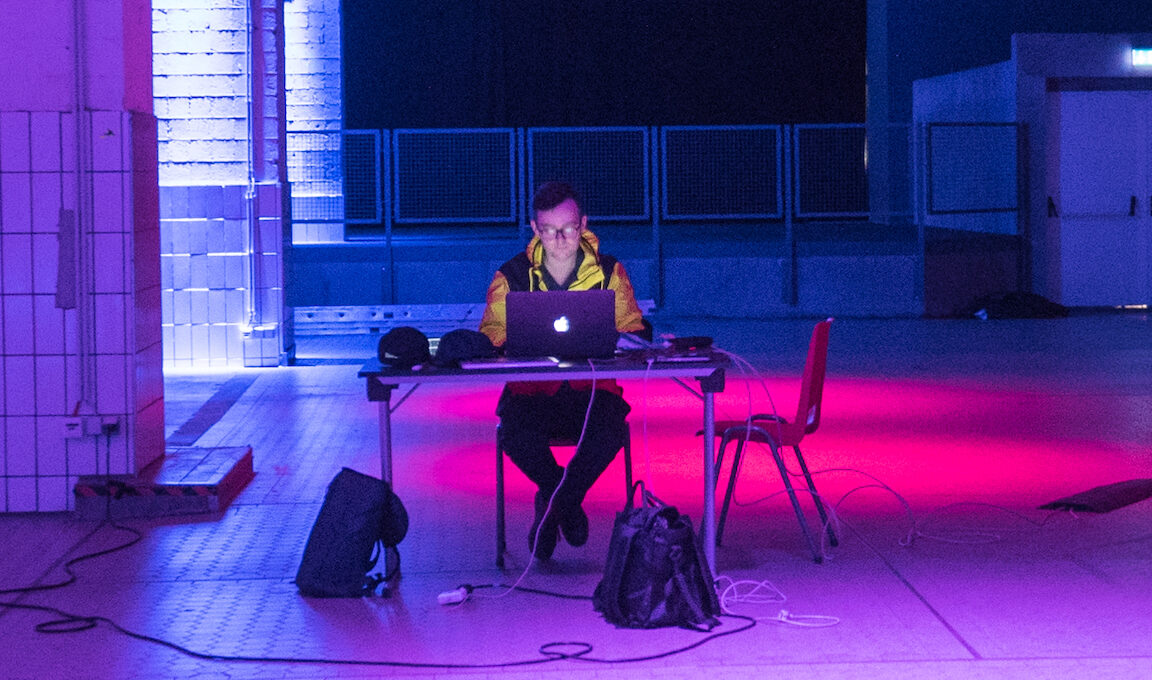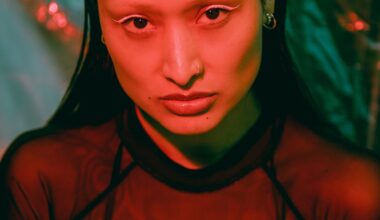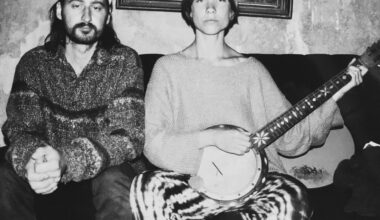Marcin Pietruszewski (1984, Poland) is a composer and researcher. He is engaged in sound synthesis and composition with computers, exploring specific formal developments in the tradition of electroacoustic music and contemporary sound art.
He works across the composition, pluriphonic installations, and radio productions. Recurring interests of his practice include synthetic sound, algorithmic systems, and the integration of scientific formalisms as compositional materials. Works exhibited at Remote Viewing (Philadelphia, 2019), and Institute of Contemporary Arts (London, 2017). Commissions by Sonic Acts (2024), CTM Festival (2021), ZKM Karlsruhe (2018) and Deutschlandradio Kultur (2016).
Collaborations include a sound installation ‘Auditory Scene Resynthesis as Cochlear Wavepackets’ (HKW, Berlin, 2021) with Jan St. Werner; NORMIFICATION with Florian Hecker. Recent sound installation – ‘Love Numbers’ – with Anthea Caddy will be premiered at Venice Music Biennale 2023.
Marcin Pietruszewski plays at our Kiezsalon at MaHalla on 26 August alongside vocalist/ambient musician from Australia Penelope Trappes and cellist Justin Wright from Montreal.
FACTS
1. I lived in Scotland for nearly half of my life and sometimes sound more Scottish than some of my friends Scotts.
2. I worked as a nursing assistant in palliative care unit for 13 years (that’s also in Scotland).
3. I like cooking; it relaxes me.
1. What is the biggest inspiration for your music?
historical sound synthesis techniques
2. How and when did you get into making music?
We had loads of different computers – ATARI, Spectrum, Commodore 64, Amiga, and later PC and Apple – at home in the late eighties and early nineties. My big brother was a computer nerd and showed me tracker software for music composition. A tracker is a type of sequencer. The term tracker comes from the first tracker software called ‘Ultimate Soundtracker’ which was written in 1987 by Karsten Obarski and released by EAS Computer Technik for the Amiga computer. A tracker looks a bit like a spreadsheet (look here: https://openmpt.org/). The parameters of music such as sample name, note number, amplitude, effects and other commands are represented as discrete values – letters, numbers and hexadecimal digits – positioned vertically. Commands are entered with the keyboard into a grid of fixed time slots. Separate patterns have independent timelines; a complete track consists of a master list of repeated patterns. I remember trying to stack variety of patterns together and play them as fast as possible so that the discrete sounds fuse into a continuous texture. Funny enough, I still recognise this continuous-discrete/tone – rhythym dynamic as central to my work; especially the work composed with the New Pulsar Generator (nuPG) program: https://www.marcinpietruszewski.com/the-new-pulsar-generator. From the beginning computer was for me an instrument capable of generating unexpected and playful sounds; a creative tool.
As a teenager in the late nineties I got my first Powerbook G3 computer and started using max/msp for composing little works for a local theatre group in my hometown Gniezno (Poland). Roughly at the same time I heard Iannis Xenakis”La Legende d’Eer’ on a CD and my interest from manipulating sound samples shifted towards sound synthesis. I was fascinated (and still am) that new timbre can be created from scratch, as Trevor Wishart observed: “Like the chemist, we can take apart what were once the raw materials of music, reconstitute them, or transform them into new and undreamt of musical materials” (Trevor Wishart (1993), “From Architecture to Chemistry.” Interface 22: 301-315).
In 2002 I have attended a workshop with a composer Marcus Schmickler and from that time I knew that I want to seriously engage with computer music. Marcus has introduced to me a lot of historical and contemporary electro-acoustic and computer music recordings (mainly Cologne scene from around A-Music label), and SuperCollider programming language. I use SuperCollider until now for most of my artistic work.
3. What are 5 of your favourite albums of all time?
Marcus Schmickler ‘Altars of Science’ (Editions Mego, 2007)
Iannis Xenakis’ “La Legende d’Eer” (WDR/Montaigne, 1995)
Yasunao Tone ‘Solo for Wounded CD’ (Tzadik, 1997)
Joy Division ‘Closer’ (Factory Records, 1980)
Martha Argerich ‘Frederic Chopin. Solo and Concerto Recordings’ (Deutsche Gramophone, 2021)
4. What do you associate with Berlin?
Family
5. What’s your favourite place in your town?
My apartment
6. If there was no music in the world, what would you do instead?
I would design and build furniture
7. What was the last record/music you bought or listen?
Apartment House ‘Morton Feldman. Violin and String Quartet’ (Another Timbre, 2023)
8. Who would you most like to collaborate with?
Zink & Copper
9. What was your best gig (as performer or spectator)?
As a performer – a solo set at OHM as part of KooKoo event series, January, 2023.
As a spectator – Curtis Roads at West Court (Edinburgh College of Art), September 2018.
10. How important is technology to your creative process?
Indespensible
11. What can we expect from your Kiezsalon concert at MaHalla?
Disorientation and Humor :)


